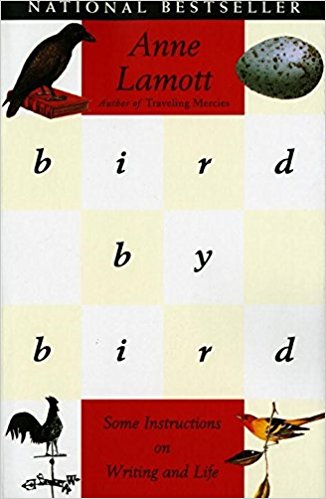
It’s finally, mercifully, here—sweet summertime!
You deserve a break. We all do! So take some time to kick up your feet, read a good book, catch up on a favorite TV show, and maybe even sip an icy beverage by the beach.
Once you feel recharged, consider reserving a slice of your summer break for gathering new ideas and inspiration for your writing classroom. You can dive into all kinds of great resources, so we’d like to recommend a few books that have inspired new ideas for our latest K-12 writing resources.
Besides being chock full of ideas for invigorating your ELA curriculum, these books are fun to read.

Minds Made for Stories (2014) by Thomas Newkirk
In a time when national standards deemphasize narrative writing, Newkirk reminds us that narrative is the “deep structure of all good sustained writing.” He argues convincingly and enjoyably that narrative is not only the pattern that pulls readers along but also the central pattern of human consciousness: We rely on stories to make meaning of our world. Among many other ideas, you will find Newkirk’s work useful for elevating the narrative form in your curriculum and for equipping your students with strategies for using narrative elements to create more engaging explanatory and persuasive texts.

In The Best Interest of Students (2015) by Kelly Gallagher
Gallagher gives a refreshing perspective about teaching English in our test-driven world, and his entire work is an ode to what works best in ELA classrooms: frequent and diverse reading and writing opportunities; scaffolding through teacher modeling and mentor texts; respect for student choice; and teaching writing as a collaborative, multi-step process. Gallagher’s egalitarian spirit and passion for teaching will draw you in and not let go. The book is packed with practical and innovative activities and assignments for all genres of academic and creative writing, demonstrated thoroughly with real examples from students and Gallagher himself. Also, don’t miss his approach to end-of-year portfolios.

Bird by Bird (1994) by Anne Lamott
The lessons from Lamott’s classic text will inspire your own teaching and writing as well as your students'. Written with wit and flair, Bird by Bird outlines the fits and starts of Lamott's own writing process and offers practical strategies for writers of all levels to discover and develop their own process and voice. You will find useful tips and strategies for teaching every stage of the writing process as well as ideas for helping students develop a positive frame of mind for writing.

The Glamour of Grammar (2010) by Roy Peter Clark
Who says grammar has to be boring? With humor and self-deprecation, Clark presents a meaty and unpretentious “Guide to the Magic and Mystery of Practical English.” You’ll find this book useful for framing some of the tricky issues of English grammar for your students. You’ll also find it useful for demonstrating how to approach grammar, punctuation, and mechanics as tools for creating meaning rather than hard-and-fast rules that must be followed. Each chapter in the book ends with a list of “Keepsakes,” which could provide starting points for creating minilessons that teach specific aspects of grammar. Clark’s Writing Tools: 55 Essential Strategies for Every Writer is another must-have for your classroom library.

“Reading Don’t Fix No Chevys” (2002) by Michael W. Smith and Jeffrey D. Wilhelm
Are you having trouble reaching the male students in your English classroom? Smith and Wilhelm undertake a study of adolescent boys in both rural and urban secondary schools to understand how they use literacy and what conditions promote it. They discover that boys perform plenty of literate activities outside of school but that school pedagogy too often fails to tap into their interests and learning styles, leading to disillusion and poor performance. Combining research, theory, and practice, this book offers solutions for reaching reluctant readers and writers. Though the strategies aim to engage males, the same approaches could work equally well with female students. This book will be particularly useful if you are interested in project-based learning.
What did we miss?
What other books inspire your writing instruction? We’d love to add your recommendations to this list. Contact tkemper [at] thoughtfullearning.com with ideas. In the meantime, happy reading!